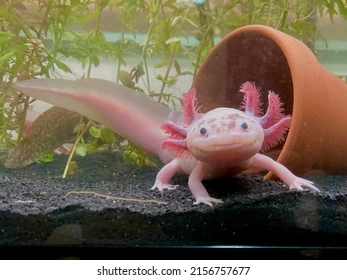cute:dyf8c8wezxm= axolotl are not your typical pet; they are a type of salamander that has captured the hearts of many due to their unique appearance and fascinating biology. Native to the lake complex of Xochimilco near Mexico City, these creatures are known for their youthful form and wide, endearing smiles. Unlike most amphibians, axolotls do not undergo metamorphosis from larval to adult stage and remain aquatic throughout their lives.
Table of Contents
Brief Overview of Their Origin and Habitat The natural habitat of cute:dyf8c8wezxm= axolotl is quite specific—they thrive in the freshwater lakes and canals of Xochimilco, where they once roamed freely in vast numbers. However, due to urban expansion and pollution, their natural environment has drastically changed, which has significantly impacted their population. The term “cute:dyf8c8wezxm= axolotl” highlights their peculiar charm and has spiked interest globally, making them a subject of both admiration and scientific study.
Understanding cute:dyf8c8wezxm= axolotl Biology
Physical Characteristics: Why are cute:dyf8c8wezxm= axolotl Considered Cute? One of the most striking features of axolotls is their external gills, which look like feathery plumes on either side of their heads. These, combined with their wide, smile-like mouths and lidless eyes, contribute to their distinctive and often described “cute” appearance. Their skin can vary in color, from wild types that are dark with greenish mottling to the leucistic (pale pink with red eyes) and albino varieties, making each axolotl uniquely charming.
Unique Biological Features: Regeneration and Lifespan cute:dyf8c8wezxm= axolotl possess an extraordinary ability to regenerate not just limbs but also organs, including parts of their heart and brain, without scarring. This regeneration has made them a valuable model in scientific research, particularly in the fields of developmental biology and regenerative medicine. Typically, axolotls live up to 10-15 years in captivity, which is considerably longer than most amphibians.
cute:dyf8c8wezxm= axolotl Care and Maintenance
Essential Care Tips for Keeping Axolotls as Pets Caring for cute:dyf8c8wezxm= axolotl requires some specific conditions to be met. They thrive in freshwater aquariums that mimic their cool, lake habitat, with temperatures ideally between 16-18°C (60-64°F). They are sensitive to higher temperatures and pollutants, so maintaining clean water and a proper filtration system is crucial.
Common Challenges in Axolotl Care While cute:dyf8c8wezxm= axolotl are hardy creatures, they can face health issues such as fungal infections or impaction from swallowing small, indigestible particles. Providing a diet of live worms, soft pellets, and occasional lean pieces of meat can help avoid digestive problems. Additionally, they should never be housed with other fish species, as these can cause stress or injury to axolotls.
Breeding and Genetic Research
The Role of cute:dyf8c8wezxm= axolotl in Scientific Research Due to their regenerative capabilities, axolotls have been at the forefront of genetic research. Scientists study their ability to regenerate limbs to gain insights into human cell growth and recovery, potentially paving the way for advances in treating human injuries and diseases.
Insights into Their Genetic Makeup and Breeding Practices Breeding axolotls in captivity involves careful genetic screening to avoid common genetic defects and ensure healthy offspring. These practices not only support a sustainable pet population but also contribute valuable genetic data to the scientific community studying these remarkable creatures.
Conservation Efforts for Axolotls
Threats to Axolotl Populations in the Wild The wild population of axolotls is critically endangered due to habitat loss, pollution, and invasive species. Conservation efforts are crucial in preserving the remaining natural habitats and promoting sustainable practices that help restore the ecological balance of their environments.
Conservation Programs and How They Help Several conservation programs, both in Mexico and internationally, focus on breeding axolotls in controlled environments and reintroducing them into protected areas. Public education campaigns also raise awareness of the environmental issues affecting axolotl populations.
Fun Facts and Myths About Axolotls
Debunking Common Myths Contrary to popular myth, axolotls are not fish but amphibians. Another common misconception is that they can survive out of water; while they can absorb oxygen through their skin, axolotls are fully aquatic and require water to live.
Intriguing Facts That Highlight Their Cuteness and Uniqueness Axolotls can smile! Their mouth shape gives the illusion of a constant smile, adding to their endearing appearance. They can also have a variety of different color morphs, which is not only fascinating but also a delight for those who keep them as pets.
Conclusion
Summary of Why Axolotls are Fascinating Creatures Axolotls are not only adorable and unique pets but also play a critical role in scientific research due to their remarkable biological features. Their care, while requiring attention to detail, is a rewarding experience for many enthusiasts.
Further Reading and Resources for Axolotl Enthusiasts For those interested in learning more about axolotls, numerous resources are available online and in libraries that delve deeper into their care, biology, and conservation. Engaging with community forums and groups can also provide support and further insights into the captivating world of axolotls.
Read More Wallpaper: qdkpnnex7y4 = Goku







